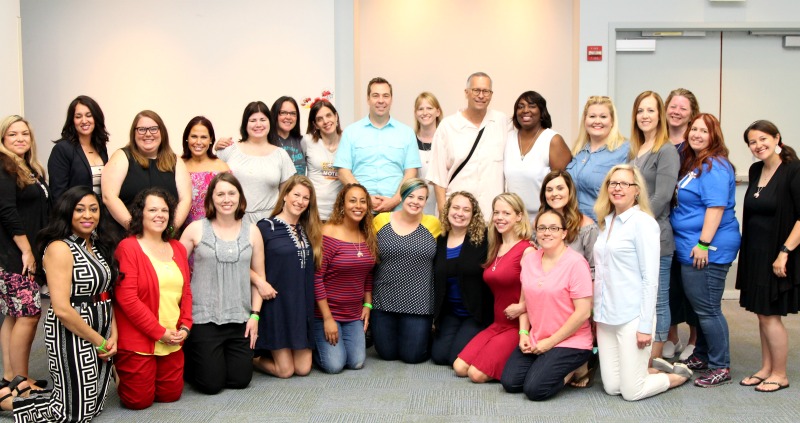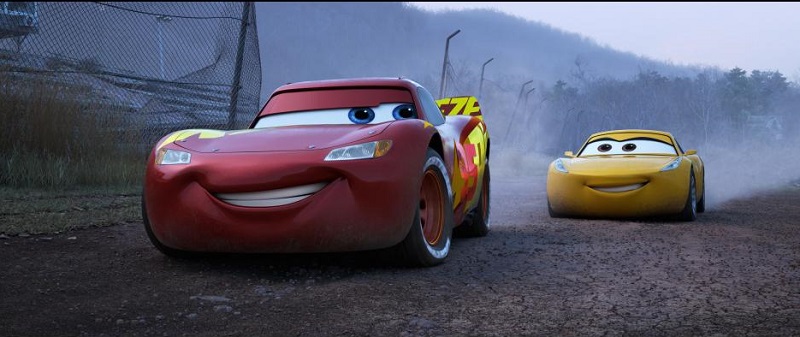Director Brian Fee And Producer Kevin Reher Tell Us What Really Went On Behind The Scenes Of Cars 3 #Cars3
I had such an amazing time in Anaheim and Disneyland last weekend and part of that was getting to go behind the scenes of Cars 3 with director Brian Fee and producer Kevin Reher. This is such a fun part of any film. You really cannot appreciate how much work goes into a film until you hear the passion and stories from the people who create and develop it. Listening to the creators talking about the passion and personal touches that helped bring Cars 3 alive for all of us really brings the film to life and creates a real human connection with the characters. In fact, they become more than characters, they truly come to life and have that human quality that connects us with a film.
The first question was asked: I’d like to kick things off with a question about the animation, there’s a scene where they’re coming down the hill and reach the sign, that seems so real. It looks like Max really drove, the grass you can touch. Can you talk about that scene?
Brian Fee: Just the graphics themselves. We have a new renderer, I don’t know if that means anything to you but we can do things that we couldn’t do on the first film. We can go wholeheartedly into a sense of realism. We try not to say photo realism because I think photo realism, that would actually be kind of boring, we almost want like a hyper-realism. We want to be able to control how you feel but we want you to feel like you can smell the air.
I remember sitting with the production designer and that was one of the main things I kept saying because he’d be how about this how about this I want to make sure you can smell the air. I mean we can’t smell anything, but make me think I can. So we went for a lot of atmosphere. You’ll see a lot of fog and things that are at a distance are so faded- just like the atmosphere between you and the thing that’s miles away, we just kind of dove into those things and we can now, because we can do these things.
Our movie, being a Cars film, more than maybe other Pixar movies lends itself to that, you kind of have to be careful with other movies, because they’re cartoon characters, and we have talking cars. I don’t know if you can get any more cartoon character than that (laughing) but we want them to look real, we want the car to look like it’s four thousand pounds. We want it to look, because everyone sees cars every day, everybody knows in your brain you know there’s reflections on cars.
You don’t necessarily look at these things when you’re on the road but you expect to see it, and we wanted to just lean into what we can take advantage of, and really go for it.
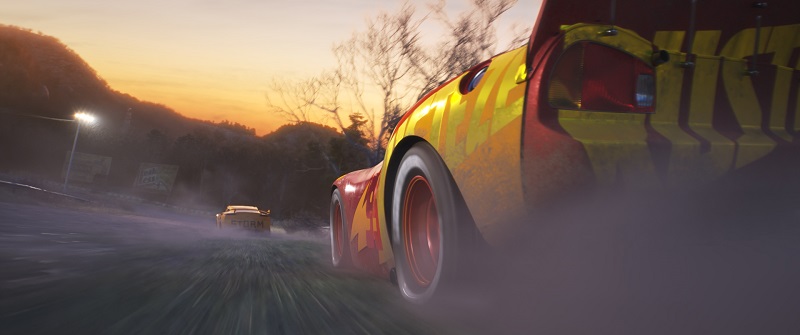
Kevin Reher: We sent the two production designers on a really wintery week, in a convertible Camaro, because they insisted on a convertible. I’m like ‘hey you’re going to freeze your a**es off’ (laughing) all the way from Daytona up through the Carolinas, and so that it wasn’t just internet research. They really drove it. We also went to two tracks that are no longer operable, one which was legendary at the beginnings of stock car and then one, which was very influential in terms of the grass.
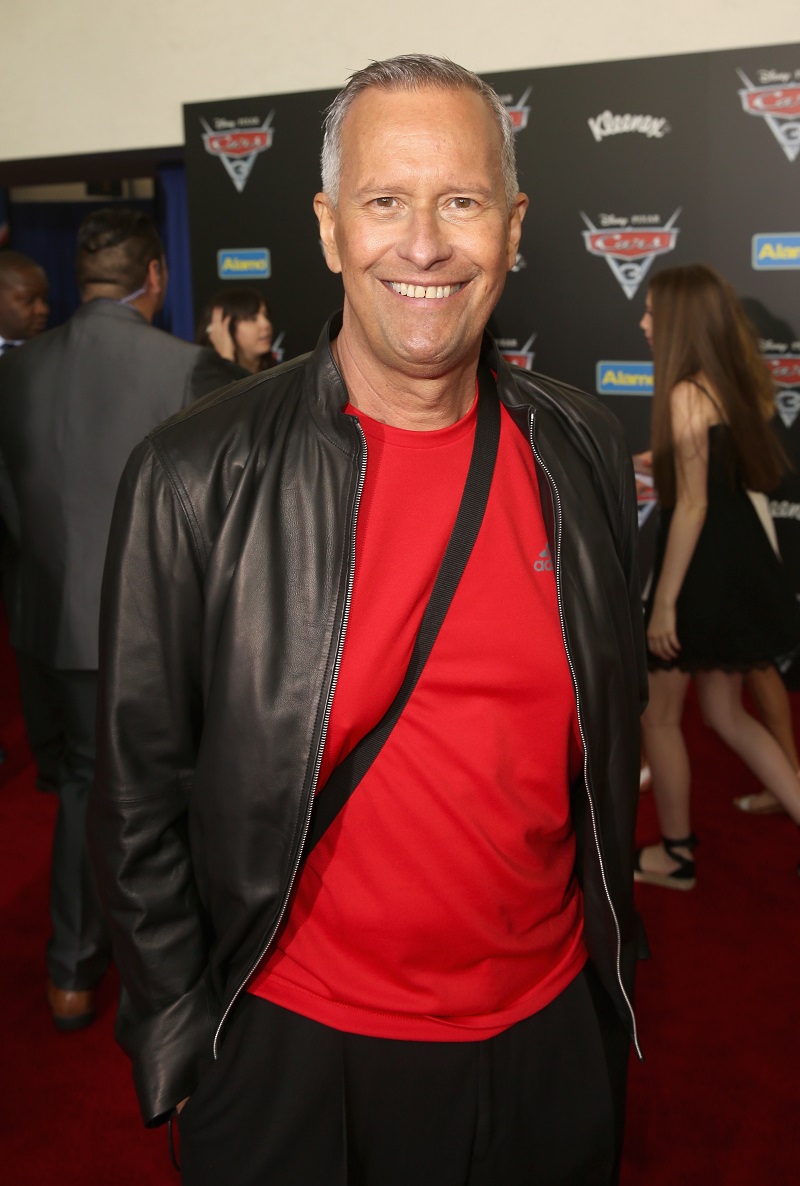
Question: Do you ever have to pull it back the animators if they go too far or it gets too real?
Kevin Reher: The animators get a little jumpy. They only have eyes and mouths to animate, I mean in terms of getting an emotion across. And so sometimes they get a little bouncy on the suspension you go okay we’re not watching the sh*t in this car bounce around.
Brian Fee: Yeah we did because we knew how this was going to look when it was all done, we did go back in at times if things initially had been over animated, which was not uncommon, the animators were just coming off of a show where they were doing fish, very expressive fish.
Or emotions that are at their heart extremely ‘cartoony’ characters. And with everybody I think coming onto this show, there’s a learning curve to the tone of this movie
Kevin Reher: Sort of the rules of Cars animation.
Brian Fee: And so knowing that these things are going to look real, we need to tone down certain things because you can’t have the cars jumping around and doing this [he bounced one of the diecast cars around the table].
Kevin Reher: They are steel, so you have to remember that they’re steel and four thousand pounds and they’re not a rubbery character that can do all that kind of movement.
Brian Fee: And less was always more.
Question: What do you want families to walk away with? There are so many messages in the film.
Brian Fee: For me, it still is the most important part for me personally as a parent, my mother passed away, my father is getting older and I looked at McQueen’s and Doc’s relationship as a father and son relationship. You could see it as a mentor-mentee, however, people plug into it in their own personal lives. And I have that moment- middle of my life my mom’s passing away and you kind of feel that safety net that you’ve always had.
That moment where you get just a little scared that everything you’ve ever known is kind of dropping. But, I have two daughters and I realized I’m their safety net, they look up to me. I’m playing that role for them and it kind of erased the fear I had of losing my parents. Not that I want to see them go, but it gave me new strength that a sense of purpose in life. So to me I look at McQueen’s on that same transition and that you may think you’re losing something, but the best thing is still in front of you- have yet to come.
I also tell the story- you try to do an art lesson. I went to art school and have an illustration degree and my daughter has been drawing these little sketches with her crayons and stuff like that, but you know, their patience is short, to say the least. They would look at professional illustrations in books and stuff and I wanted to demystify that. I wanted them to [know] that’s just a person, a person just did that. The only difference between those and their little doodles is that they took longer to do it.
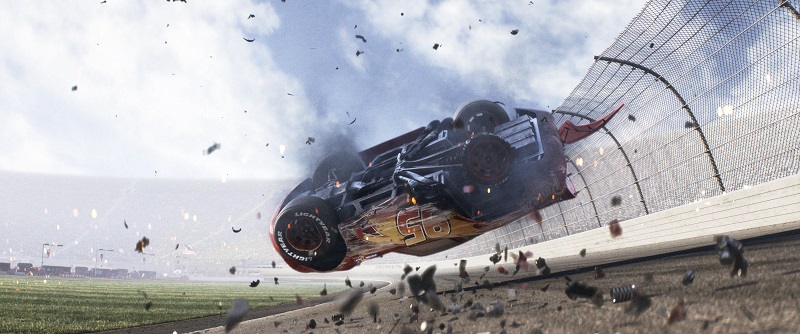
They went to school and learned how to do it and they spent more time on it. So I set up one of their American Girl dolls and I was going to paint it, I’m going to paint this girl’s portrait and I want you to see all that goes into it and it takes a while, you’ve got to put some time in. I don’t know after about twenty minutes, they’re gone. And I was going to stick it out, I’m going to stick it out, and I’m going to show them that a little perseverance and a little time so I spent hours on a Saturday on that (laughing) spent hours doing this, I didn’t get quite done but I got almost done.
And I showed them and they just went, yeah that’s cool (laughing) and I had this moment where I just thought oh if I was going to paint something on a something afternoon- I didn’t think it would be an American Girl doll. There’s a lot of things I could do, I mean I don’t have a lot of personal time anymore. I kind of walked away and that was a failure it didn’t work out the way I wanted it to, but a week later, I come in on my older daughter Lucia I go in her room.
And she’s eleven now so this would have been several years ago and she had these papers on the floor and they were her stuffed animals and she had set them up, sorry I can’t tell the story without getting emotional. She set them up and she was drawing their portrait and it was- sorry- pull it together (laughing) and in that moment, I felt like that might just have been one of the most important paintings I’d ever done. And well more important than anything I would have done for myself.
So, that was the kind of thing I was trying to communicate, I wanted McQueen to feel that- when he spends most of the film trying to do service to his own career, the thing that he thinks he’s most passionate about. And terrified of losing actually, actually terrified of losing the one thing that brings him the most joy. And then I wanted him to see that there’s helping someone else do it is actually not only just as powerful but can be more powerful. Personally, I have to say he completely conveys that message. It’s a beautiful story and I think this may actually be my favorite of the franchise.
Kevin Reher: For me, it was the Doc Hudson McQueen relationship and my dad died and I was the car kid, my brother was the sports kid. And he never got to see even Cars One, and so the whole McQueen Doc stuff just slays me.
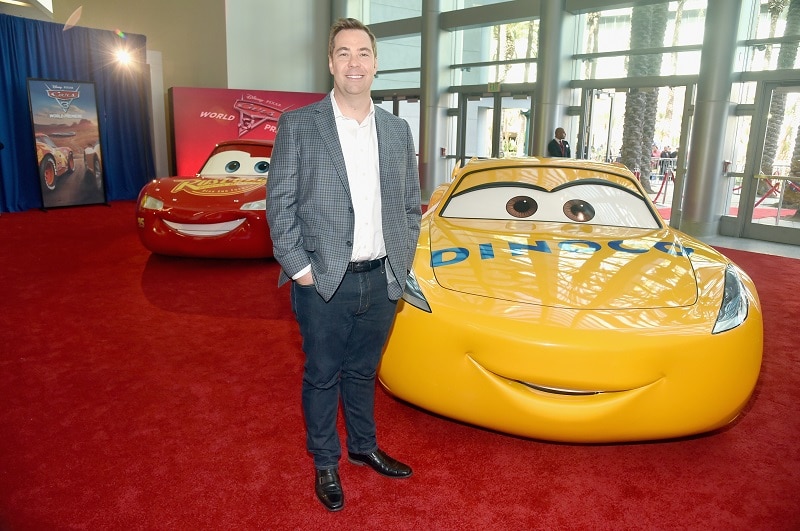
Question: Speaking of Doc he had such a presence in the film and of course Paul Newman is no longer with us so I’m curious about the process. You used old recordings, how did that come together?
Kevin Reher: The Newman Foundation was very generous with us and we let them know that this wasn’t just a marketing trick that this was really integral to the story, and we had all these recordings of open mic kind of thing that John [Lasseter] had recorded when he was doing Cars One. So we had a transcript of all this and tried to fashion the story- what line could help us serve the story. It’s pretty emotional when you hear it- and then we used the old Doc line, ‘you think I quit – they quit on me’, which mirrored what had happened to McQueen.
Brian Fee: Yeah, we originally tried a sound-alike because you kind of want to write whatever you want to write, right? It just wasn’t working. It just had no magic it just- and then we decided all right, we have to find the lines, cross our fingers that we’ve got the right lines to help us tell the story. It was just spending a lot of time and finding when we can give Doc something to say.
Kevin Reher: We also did the same thing with Tom Magliozzi with Click and Clack and we actually went back to the producer of- strangely randomly his producer lives in Berkeley. And so he helped us go back to the original Car Talk tapes and….
Brian Fee: ‘Don’t drive like my brother. Don’t…’
Kevin Reher: …actually came from those Click and Clack tapes that we were allowed to use.
Question: That was part of the story, how McQueen got to where he was and it took a village, so did that motivate you when you were making the film? Did you think about that in the process?
Brian Fee: I don’t know if we thought about it.
Kevin Reher: We just have an amazing group of people. When the story is small, art is small, editorial is small, but then the whole animation and T D world there are huge numbers. Our crew got to be over two hundred fifty people, and so that sort of enterprise that they can make the movie but it’s up to him what story are we telling. And we knew we had a terrific writer who set us up very well with structure.
So, we knew something was going to happen in all these things. We didn’t know what they were going to say or when they were going to say it, but we knew and because the team could just tell us what you want, we’ll build it, even in mud, which was hard.
Brian Fee: And we were able to rely on the fact that the team is so good that we continued to change things throughout the process. So whenever the story is locked, and they’re going to now make that part of the story, you’re going to shoot it and you’re going to start animating it, we would continue to evolve. Because we’d get input from that group or their experts.
We’d just kind of keep an open mind every step of the process even in recording actors. Any opportunity to get a sense of improvisation in the film, which the acting studio is the only place you can do that in animation, to get lines off the cuff that- I remember workshopping stuff with Owen where he would, I don’t know if he’d really say it like that, do you think he’d say it like that [Laughing] and we’d talk about the purpose of the scene.
Okay, let me try something, mind if I try something. And whenever an actor says can I try something, the answer is always yes, it may not work, but or it may just be the best thing. And those surprises when stuff got better than I would have ever expected. So we try to look for those opportunities from everybody on the crew.
Kevin Reher: We joke about that the movies never get finished, they just come out and a good example of this is our writer Mike Rich is such a deep thinker and a wonderful super- he did Secretariat he did The Rookie Miracles.
He was the king of the sports comeback story, so I called him about this and are you up to doing it and he said, sure, and he said, can I see the reel, so we sent him a copy of the reel…
He’d been off the movie for a year. The whole mentorship and the flip of Cruz and everything was different and he said, I have a note and I’m like oh no- so I said what’s the note and he- that wonderful moment at the end of the race, where Cruz looks at McQueen and McQueen looks at Cruz.
And there’s no dialogue, it’s just acting, that sort of recognition of thank you for what you did, thank you for what you achieved, that was his note. And so we went back into Animation and said, we’ve got another shot, and okay no problem and that shot actually is- because then the craziness starts with Sterling and all the other stuff, so it was exactly the right moment that we needed in the movie and he added it.
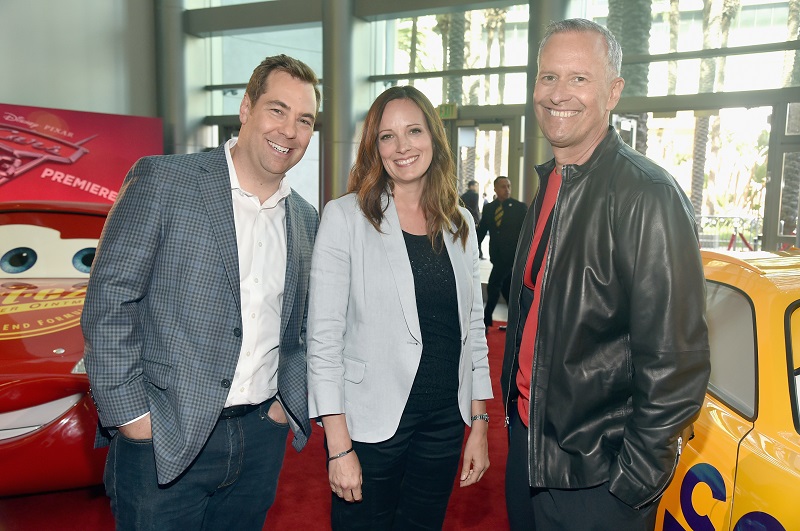
Question: How do you guys go about casting the characters?
Brian Fee: After we have a pretty good idea of the character, we know what we’re looking for, we just we start casting-
Kevin Reher: Natalie [Lyon] and I, – I got two credits on this one I love that. So, Natalie Lyon and I worked together and so we needed a really smart actress that- you know, one of the things about the side characters also is you have to get it right away. So when Natalie, when Kerry Washington opens her mouth as Natalie Certain, you have to get that she’s smart, accomplished, knows what she’s talking about and no bullsh*t.
You have to get that because you don’t have the time or the screen time to do a backstory for her or how she got there and all kinds of things. And Armie Hammer who is the nicest man in the world could channel his inner jerk and he’s so terrific at being sarcastic and everything else and yet if you talk to him in person, besides being very handsome, he’s super charming and really nice and they immediately got what that character was going to be based on a character description that we were given.
And we come up, we usually come up with probably three actors that we like, you have to kind of be okay with Plan B or Plan C and then we go to John Lasseter who still approves all casting and we take a picture of the character, who he’s going to be talking to. So Jackson Storm talking to McQueen and we do kind of nonsensical theater. And we have lines from the Lone Ranger or lines from Social Network talking to McQueen, talking to Owen and see how it’s going to play off so that you don’t end up with voices that are too similar.
Part of it is there is the aspect of you just want the quality of the voice to match the image, wouldn’t Jackson have a strong voice deeper than a thin voice, we wanted him to be a powerful car, so there needed to be broadness to his vocal range. Other times I think for Miss Fritter we only put one voice in the crowd. We had one other one but Lea- I’m a big Lea fan I have all of her albums.
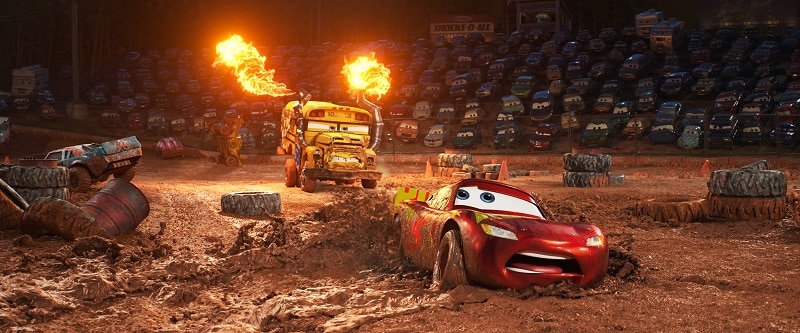
Brian Fee: We could not find the clips for her for whatever reason because we were-
Kevin Reher: We couldn’t have obscenities (laughing). It’s really funny when you see animation swearing.
Brian Fee: We were so excited about her and then we pulled the clips and we would listen to it from Orange Is the New Black and then put her on and it just wasn’t – it wasn’t who Fritter needed to be. But she’s actually when you think about taking her visual off and you just listen to the voice, which is another thing we do, we don’t listen- we don’t try to watch their facial acting, a lot of actors get a lot of it out of their being and their facial expressions.
We’re looking for the actors that do it with just their voice, or at least it jumps out. For whatever reasons, she’s really mild, her vocal performance in Orange Is the New Black is milder than you would think when you take her face and her presence out of it, so they weren’t going to work and we knew if we put this in front of John, he was going to say no.
Kevin Reher: But some of her standup [would work] so we pulled up some of her standup.
Brian Fee: Her standup is great, so she did her own audition, because we didn’t want to let it go, we wanted her to be in the movie.
So we sent her some script pages, she read the script pages at home in her iPhone and did her own audition and so that’s what we used.
Kevin Reher: And she’s actually on the sound track during Riding on the Freeway of Love with horns and backup singers because she’s a singer and then again Easter eggs and little eggs, she is Boo in Orange is the New Black so her first moment is when she goes Boo [in the film] and then when she says You’re going to feel the wrath of the Belleville Unified School District.
She actually went to Belleville High school and even then we get crazy, even license plates – like the license plate on Natalie Certain is Kerry Washington’s birthday and New York where she was born and we have production babies and we have Kerry Washington’s son and Armie Hammer’s son in the production babies at the end.
Brian Fee: And Cristela actually informed how we wrote that character, so one of the things we looked for when we cast Cruz was we spent a lot of time. Cruz might have been the hardest character.
Because we wanted to get it right, spent a lot of time on her for casting too but Cristela had that voice, you know, it’s kind of like you line up a bunch of people in a room that are going to audition and they’re all wearing gray sweaters, Cristela was the one who’s voice was like the bright red sweater and we went to her standup act and we were already in love with her humor and her liveliness and her she’s just this infectious laugh and she just she starts talking and you want to hang out with her.
And there’s a part of her comedy act where she gets, she stops telling jokes and she gets really serious and she talks about her mother, very touching stuff for her.
Kevin Reher: …who passed away…
Brian Fee: And there’s such a soul in her voice when she stops telling jokes, and that’s when we knew oh this is, she’s got to be the right one. And then we ended up rewriting the character because Cristela had a story about growing up wanting to be a comedian in a border town in Texas and her mother told her, we don’t do that, we clean houses, we don’t-
And she was trying to protect her, but just the fact that she had to break through that barrier after we cast her we went back and- because we’re always tweaking and evolving characters as much as we can and we rewrote Cruz’s backstory with that in mind.
Kevin Reher: We also have to make sure that the voice, you’re sending ostensibly a young Latina on a road trip with McQueen. You really got that they were mentor mentee or that they were going on this journey together but it wasn’t about love or romance or any of that stuff.
About Cars 3:
Blindsided by a new generation of blazing-fast racers, the legendary Lightning McQueen (voice of Owen Wilson) is suddenly pushed out of the sport he loves. To get back in the game, he will need the help of an eager young race technician, Cruz Ramirez (voice of Cristela Alonzo), with her own plan to win, plus inspiration from the late Fabulous Hudson Hornet and a few unexpected turns. Proving that #95 isn’t through yet will test the heart of a champion on Piston Cup Racing’s biggest stage! Directed by Brian Fee (storyboard artist “Cars,” “Cars 2“) and produced by Kevin Reher (“A Bug’s Life,” “La Luna” short), “Cars 3” in theaters NOW.
Like CARS on Facebook
Follow CARS on Twitter
Follow CARS on Instagram
Subscribe to the Disney/Pixar YouTube channel here
Visit the official CARS 3 website here
CARS 3 is in theaters everywhere NOW!


